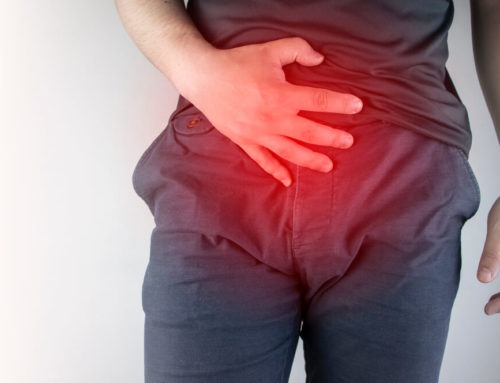A hernia is a protrusion (unnatural protrusion or bulging) of an internal organ through the muscle wall that surrounds it. Gastric (hiatal, esophageal, or diaphragmatic) hernia, i.e., hernia of the hiatus (opening) of the esophagus, occurs when parts of the abdominal organs prolapse (slip or protrude) from the abdomen into the chest, through the opening in the diaphragm. Medically speaking, the diaphragm is a muscular or connective membrane separating the chest from the abdominal cavity.
The cause of a hiatal hernia is unknown, but it may be the result of an injury or congenital disability. It usually does not require extensive treatment. However should you notice symptoms, please consider hernia treatment in Palm Beach County.
What Is a Hiatal Hernia?
After the food passes through the esophagus, it reaches the lower esophageal sphincter (a circular muscle that relaxes to allow food to pass into the stomach), where, with the help of digestive gastric juices, acids, and enzymes, digestion begins. The food stays there for up to four hours.
Later the food should pass through the small and large intestines. However, if you have a hiatal hernia, the stomach’s contents partially return to the esophagus, and this causes a problem.
Hiatal hernia is, in fact, an anatomical anomaly that disrupts the normal function of the end part of the esophagus and the stomach’s beginning part, which refers to the normal transport of food and preventing it from returning from the stomach to the esophagus. When there is a gastric hernia, the acid returns unhindered into the esophagus and leads to damage to the mucous membrane, and we begin to notice the symptoms of this health issue.
Types of Hiatal Hernia

There are two sorts and four hiatal hernia types:
– Sliding hiatal hernia (type I) – a condition in which the junction between the esophagus and the stomach protrudes unnaturally above the diaphragm, and part of the stomach can “slip” into the esophagus.
– Paraesophageal hiatal hernia (types II, III, and IV) – a condition in which part of the stomach protrudes above the diaphragm and lies next to the esophagus.
The picture above illustrates best the difference between the natural condition of the esophagus and stomach and different kinds of hiatal hernia. In a large portion of cases (95 percent), patients have type I hernias, or so-called sliding hernias. With this type of hernia, the stomach occasionally prolapses into the chest via the opening of the diaphragm. This diaphragmatic hernia often affects the entire upper part of the stomach.
Types II, III, and IV hiatal hernias, commonly referred to as paraesophageal hernias, occur when a large part of the stomach, or even practically the entire stomach, prolapses through the diaphragm’s opening into the cavity of the chest. In type II hernia, unlike type I, the entrance of the esophagus to the stomach remains below the diaphragm.
Type III hernia is a hybrid, i.e., a combination of types I and II. It usually starts as a sliding hernia; over time, more of the stomach moves laterally from the esophagus into the chest cavity. The extreme form of this hiatal hernia is the so-called “upside-down stomach,” where the stomach is completely placed in the chest.
Type IV hernia is a huge diaphragmatic hernia in which other abdominal organs, such as the spleen or colon, pass into the chest cavity as well. These larger hernias usually cause more severe symptoms.
Organs laid in this way can be pinched or twisted around their axis, which leads to the appearance of severe pain. This condition is considered a hiatal hernia emergency and most often requires surgical intervention. Hiatal hernia becomes a medical emergency if the intestines or esophagus are trapped or incarcerated, cutting off their own blood supply.
Hiatal Hernia Symptoms
The symptoms and complications typically experienced by patients with hiatal hernia are:
- Gastroesophageal reflux disease (GERD) – often occurs due to weakened pressure on the opening of the stomach, which opens and leaks stomach acid into the esophagus, resulting in vomiting and severe heartburn;
- Inflammation of the esophagus due to frequent reflux of stomach acid;
- Minor or major bleeding from the mucosa;
- Strangulation – a dangerous hernia complication that requires surgery, which occurs when the paraesophageal hernia is pinched (strangled) by the diaphragm and is no longer adequately supplied with blood.
Patients often affected by this condition are:
- people older than 50 years (mainly women),
- pregnant women,
- obese people,
- people who suffered a severe abdominal injury.
If the hiatal hernia is larger, a patient may have some of the following worrisome symptoms:
- Pain in the upper abdomen or behind the sternum
- Difficulty swallowing, especially solid food
- Feeling full immediately after taking a few bites of food
- Bleeding from the upper parts of the digestive tract, which manifests as vomiting of fresh red blood or black, tarry stools
- Anemia
Diagnosis and Treatment
There is a large percentage of people who have a smaller hiatal hernia after the age of 50. However, it can occur at any age, even in the younger population. It occurs more often in women.
Hiatal hernia is diagnosed by liquid barium ultrasound, endoscopy, and X-ray of the lungs and chest.
In most cases, the gastric hernia does not require treatment. What is usually treated are the symptoms of GERD (gastroesophageal reflux disease). This is done by reducing gastric acid reflux, avoiding foods that irritate your stomach, and lifestyle changes that include the reduction of stomach acid. Some exercise and yoga can also help with reducing acid reflux.
Before starting medication, it is necessary for patients to change their lifestyle habits. Excess weight and lack of exercise increase the risk of developing a hiatal hernia. Mild conditions are treated by elevating the patient’s head (15-30 cm), avoiding eating two to three hours before going to sleep, avoiding strong stimulators of gastric secretion (such as coffee or alcohol), certain foods (such as fat or chocolates), and smoking.
Generally, the need for gastric surgeries has decreased with the advancement of medicine worldwide. There are solely several cases in which your doctor may assess that the condition is more severe and that surgical intervention is required.
Paraesophageal hernia complications require surgery when a patient has ulcers due to GERD, narrowing of the stomach, or when strangulation has occurred, i.e., in the situations of a hernia emergency. The surgeries are performed in a minimally invasive manner and are performed with the help of a laparoscope.
Should You See a Doctor?

You should definitely contact your doctor if you constantly feel nauseous or vomit, suffer from severe heartburn, have trouble breathing, experience sharp pain in the abdomen, or notice frequent occurrences of any symptoms mentioned earlier.
The information that will be of utter importance to your doctor is the symptoms you have experienced, even those that do not seem to be related to a hiatal hernia, medication you have taken to treat other diseases, data such as your weight and the age at which you perceive you experienced first symptoms, usual dietary habits in the previous period, course of the disease, and possible hernia complications you experienced.
At Your Service
At Advanced Surgical Physicians, we will provide the best gastroenterologists and suitable care when choosing the appropriate approach for your abdominal disease. Contact our clinic now and schedule your appointment for the examination.







